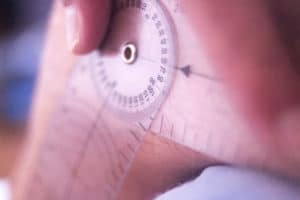
Of course, any injury that prevents you from doing things you love can impact your psychological wellness, too. Frustration, fear, sadness, anger, and loneliness are just some of the emotional challenges many injured athletes face.
So, whether you’re a serious competitor or simply someone who loves staying active, these are the things you’ll want to know about recovering from and preventing sports injuries.
Common Types of Sports Injuries
While largely preventable (more on that later), sports injuries in children and adults are relatively common. According to the Department of Health and Human Services, about 8.6 million sports- and recreation-related injuries occur each year in the United States. Such injuries include:
- Muscle strains
- Ligament sprains
- Joint dislocations
- Tendonitis (golfer’s elbow and tennis elbow—called medial epicondylitis or lateral epicondylitis, respectively—are common forms of tendonitis affecting the elbow)
- Bursitis
- Meniscus tear in the knee
- Medial tibial stress syndrome (better known as shin splints)
- Plantar fasciitis
- Stress fractures
- Whiplash and concussion
- Generalized joint pain and back pain
When injured, an athlete will likely experience signs and symptoms like pain, stiffness, swelling, reduced range of motion, and weakness. A person might notice unusual clicking, popping, or grating sensations in a joint. Depending on the specific type and severity of the injury, these symptoms might get worse or better depending on activity level or time of day.
DOWNLOAD OUR FREE GUIDE: “7 Secret Recovery Strategies That Only Pro Athletes Know And Use.”
What’s the Difference Between an Acute vs Chronic Sports Injury?
In general, we categorize sports injuries based on how quickly the symptoms and underlying tissue damage develop. An acute sports injury develops suddenly, often after a specific type of impact or movement such as an awkward pivot, jump, fall, or even a collision with another player or object. The hallmark warning signs of an acute sports injury include pain, redness, warmth, and swelling.
Conversely, a chronic sports injury develops more gradually over time, often as a result of repetitive microtrauma to a specific tissue or area of the body. Untreated acute injuries can turn into chronic sports injuries, too—which is one reason why I don’t recommend ignoring a sports injury or “working through” the pain and hoping it’ll just go away on its own.
How to Prevent Sports Injuries
Unfortunately, not all sports injuries are preventable. Slips, trips, and other accidents can happen during any type of activity, including hiking, CrossFit, golf, cycling, swimming, running, or any team sport. But all of us can adopt strategies to reduce our exposure to common sports injury risk factors and keep ourselves healthy.
To avoid getting sidelined by an acute or chronic sports injury, be sure to:
- Get adequate rest and recovery by following an intelligently-designed training program
- If new to exercise, ramp up your activity level gradually (and avoid the “weekend warrior” mentality)
- Learn and use proper technique
- Wear and use good-fitting gear and equipment
- Commit to a consistent warm-up routine that gets your circulation going, your heart rate up, and your joints and tissues more mobile
- Prioritize sleep, hydration, and nutrition
- Seek professional care for any pre-existing health conditions or old injuries
The Benefits of Physical Therapy for Athletes
As experts in human movement, physical therapists are ideal resources for athletes. PTs are licensed to diagnose and treat sports injuries, and can implement specific interventions that will:
- Reduce pain and other symptoms
- Prevent excessive scar tissue
- Improve range of motion, postural alignment, endurance, strength, stamina, and/or coordination
- Minimize the need for pain medication
- Prevent recurring injuries or future complications, up to and including surgery
- Help determine when it’s safe for an athlete to return to sport
Physical therapy treatment for the injured athlete will vary, but generally includes a combination of manual therapy, modalities, and specific exercises and stretches.
Ready to Put Your Injury Behind You?
There’s so much you can do to avoid the physical and emotional toll of a sports injury—and so many ways a physical therapist can help. If you’re an active but-injured person living near Los Altos, CA, call us today to schedule an appointment.
Call today to talk to a member of our team: (650) 947-8500
PhysioFit is also the host of the popular (and free) “Ask a PT” online Q&A sessions, where community members get the chance to discuss a broad range of topics with a board-certified PT. If you are interested in attending our next Q&A give us a call and we will get you in.
 ABOUT THE AUTHOR
ABOUT THE AUTHOR
Kim Gladfelter, MPT, OCS, FAAOMPT
Women's Health Physical Therapy Specialist at PhysioFit Physical Therapy & Wellness
Kim Gladfelter is a physical therapist, Pilates instructor, educator, author, and co-founder of PhysioFit Physical Therapy & Wellness. She is known as a keen, well-rounded expert of healing through movement and women’s health specialist in the Silicon Valley area.
Kim has helped men and women of all ages to stay active and feel their best. She also writes about managing pain in her health columns, blogs and the local Los Altos Town Crier newspaper as well as reaches out to the local community, support groups, schools, libraries, and sports centers to advise and educate on body awareness and therapeutic exercise.

 Los Altos, CA
Los Altos, CA


